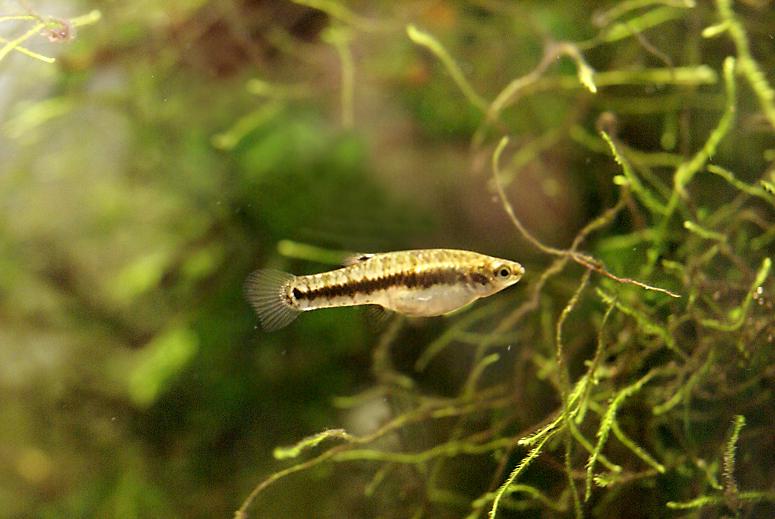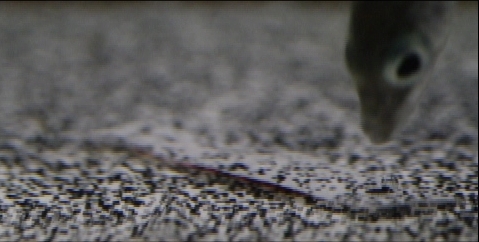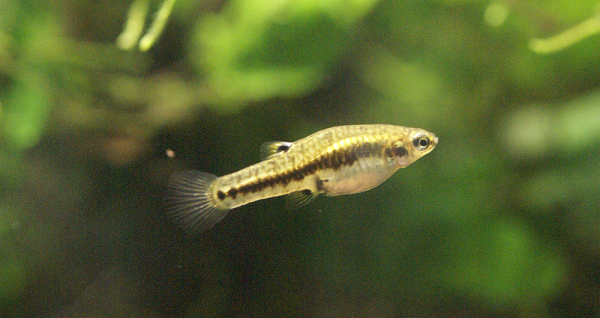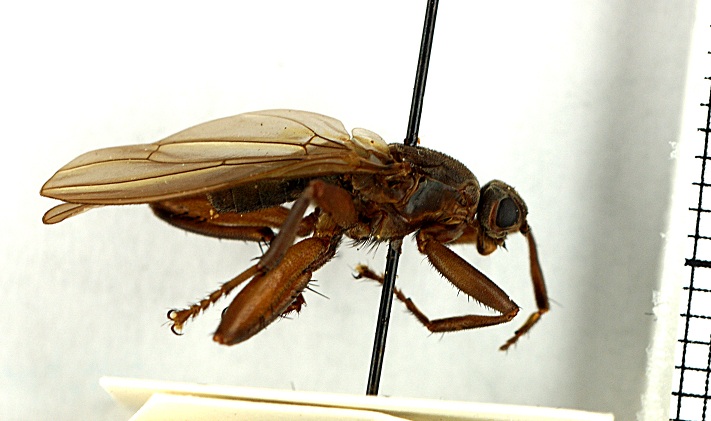BEEG's current projects

Background choice as an anti-predator strategy: preference between visually complex and matching backgrounds in the least killifish (Heterandria formosa)
Karin Kjernsmo, Sami Merilaita
Background-matching prey colouration effectively decreases the risk of detection by predators. Therefore, it has traditionally been assumed that prey have been selected for preference for those parts of habitats that visually match their colour patterns. Yet, such preference has been demonstrated only in some species. Recently, however, this traditional idea has been challenged by an alternative hypothesis. It has namely been shown that not only the visual resemblance between the prey and its background, but also the visual complexity of the background makes prey detection more difficult. This suggest that prey could decrease their risk of detection by preferring visually complex backgrounds. Here we tested these two hypothesises, preference for matching and preference for complex backgrounds, by studying the least killifish (Heterandria formosa) under simulated predation threat. More specifically, we tested their preference between matching and mismatching background patterns, and between matching and complex background patterns. Our results showed that the fish preferred matching background before non-matching. Interestingly, females showed preference for complex background before matching whereas males consistently showed preference for matching backgrounds. We discuss the possibility that visual complexity may serve as a straightforward and reliable cue of a safe habitat.

Eyespots as anti-predator device: Investigating the possibility of intimidating- and deflective effects against predation by fish
Karin Kjernsmo, Sami Merilaita, Annika Wiksten
Eyespots (colour patterns consisting of concentric rings) are found in a wide range of animal taxa and are often assumed to have an anti-predator function. Previous experiments with birds as predators have shown that some eyespots have an intimidating effect. It has also been hypothesized that in some species eyespots could have a deflective function. These eyespots would divert attacks towards less vital parts of prey body and hence increase the probability of the prey surviving an attack. There exist, however, no firm studies about their effect in aquatic environments, although eyespots have indeed initially evolved there. Our aim was to investigate the protective function of eyespots against fish predators. We used different artificial prey items to test both the intimidation and deflective hypothesis. We used three-spined sticklebacks (Gasterosteus aculeatus) as predators. Our results show that large eyespots may cause hesitation in attacking fish. Interestingly, small eyespots caused a strong deflective effect on fish.

Polyandry, genetic conflicts and sibling interactions: do outbred least killifish rescue their inbred siblings in mixed-paternity broods or is it 'each fish for itself'?
The least killifish (Heterandria formosa) is a small live-bearing poeciliid found throughout the south eastern United States. Females provision the foetus after fertilisation (matrotrophy) through a placenta-like structure, similar to that found in mammals. The high degree of matrotrophy in the least killifish allows the female to carry several broods at different stages of development at the same time (superfetation). In least killifish, parent-offspring conflict arises because there is a difference between the optimal levels of maternal provisioning for maximising parental and offspring fitness. Sibling competition for resources also occurs because each offspring considers its inclusive fitness to be more important than its siblings'. This is compounded by polyandry which results in females provisioning mixed paternity broods simultaneously. The genes from different parents within and between offspring also have conflicting optima for provisioning where male genes will be selected for which promote the extraction of resources beyond the female optima. Polyandry may increase female reproductive success by avoiding the costs of inbreeding, such as weak embryos that can't acquire enough maternal resources for optimal fitness. Outbred embryos are fitter and obtain more communal resources. This study will determine whether polyandry reduces the costs of inbreeding if inbred embryos develop with outbred half-siblings: in broods that are of mixed paternity, do outbred offspring rescue their inbred siblings, or is it ' each fish for itself'?

The evolution of sexual size dimorphism and Rensch's rule in seaweed flies
Jennifer Blyth, Derek Dunn, Sami Merilaita
Sexual size dimorphism (SSD) is relatively common among animals. The evolutionary forces leading to SSD are complicated but largely fall into two categories: (1) fecundity selection and (2) sexual selection. Fecundity selection is based on the physiological constraints of females. Larger females can produce more offspring, so there should be selection for females to be big. Sexual selection is based on factors that cause females to mate with particular males rather than others. Size gives males an advantage in these interactions, so there should be selection for males to be big. Generally, small species tend to be more influenced by fecundity selection; whereas, large species are more influenced by sexual selection. SSD is related to body size whereby SSD decreases with body size when females are the larger sex and increases with body size when males are the larger sex. This phenomenon is known as Rensch's Rule. This rule partly explains the observation that many small invertebrate species include large females and small males; whereas, many large mammal species include small females and large males. Rensch's Rule has been seen in wide range of organisms e.g lizards, birds, primates etc. The mechanisms producing this pattern remain unclear. Seaweed flies (coelopids) are an unusual and interesting case because some species have male biased SSD (rare in insects), some have female biased SSD and some have no SSD at all. Also in at least one species, there may be all 3 cases where males can be larger, smaller and the same size as females within the same population (C. frigida). There are only a few organisms that show both types of SSD in the same taxon. This project will test Rensch's rule in seaweed flies and investigate the forces driving sexual seize dimorphism in these species.

Cryptic female mate choice and its importance as a force of sexual selection in the seaweed fly, Coelopa frigida
Jennifer Blyth, André Gilburn, Sami Merilaita
The seaweed fly, Coelopa frigida, is an ideal model organism for studying sexual selection due to its extremely high natural re-mating frequency and the strong heterosis that operates on the basis of its ab chromosome I inversion system. A previous study carried (Blyth & Gilburn 2005) found that females homokaryotypic for the inversion system produced an excess of heterokaryotypic offspring after mating with a male of each homokaryotype in quick succession. This occurred irrespective of the order of the matings. Females may, therefore, selectively use sperm of the complementary karyotype to produce fitter heterokaryotypic offspring. We are testing this hypothesis by determining if homokaryotypic females have the ability to select sperm on the basis of karyotype. We are also trying to establish whether cryptic female choice occurs under more natural conditions by conducting mass-mating experiments, allowing other components of the mating system to affect the pattern of sexual selection.